11 Rare Mid-Century Clocks That Collectors Pay Premiums For
Clocks from the mid-century period are recognized for their bold, yet simple designs that reflect the modernist movement of the time. Often incorporating wood, metal, and glass, these clocks were built with a focus on form and utility. Their clean, geometric lines and striking designs make them timelessly appealing. As collectors seek out these vintage pieces, prices for well-preserved models continue to rise. If you’re passionate about design history, these mid-century clocks are definitely worth exploring.
This post may contain affiliate links, which helps keep this content free. Please read our disclosure for more info.
George Nelson Sunburst Clock (1950s)

The George Nelson Sunburst Clock, created in the 1950s, is one of the most iconic mid-century designs. It’s valued by collectors for its dynamic, starburst pattern and minimalist aesthetic. Well-preserved examples of this clock can range between $400 and $1,500 depending on the condition and rarity of the version. The best feature is its visually striking design, with radiant spokes that resemble the sun’s rays, making it a perfect piece for anyone who loves mid-century modern style. It’s a statement piece that immediately attracts attention in any room.
The clock’s value is also tied to its original condition, with intact mechanisms and clean, undamaged spokes. Many of these clocks were produced in large quantities, but their longevity and rarity of well-preserved pieces make them a collector’s treasure. As one of the most recognized mid-century designs, it holds a significant place in both the design world and the clock-collecting market. The combination of its function as a timepiece and a work of art is what makes this clock highly desirable. It’s an essential item for anyone building a collection of vintage mid-century décor.
Hermle Regulator Clock (1960s)

The Hermle Regulator Clock, released in the 1960s, is a sophisticated timepiece known for its precision and elegant design. These clocks typically range between $700 and $2,000 based on condition and rarity. The best feature of the Hermle Regulator is its long pendulum and the intricate mechanical movement, which makes it a prized possession for clock collectors. This clock is a fine example of German craftsmanship, renowned for its quality and durability. The design is simple yet elegant, making it a classic piece of functional art.
Condition is key for this clock’s value, as the original movement and minimal wear on the dial can significantly increase its worth. Well-maintained models with the original wooden case and brass components are highly sought after. The craftsmanship and attention to detail in these clocks ensure they remain highly collectible even today. For those interested in precision timekeeping and design, the Hermle Regulator Clock is a perfect addition to any collection. Its value will continue to appreciate as fewer well-preserved models become available.
Atomic Clock by Howard Miller (1950s)
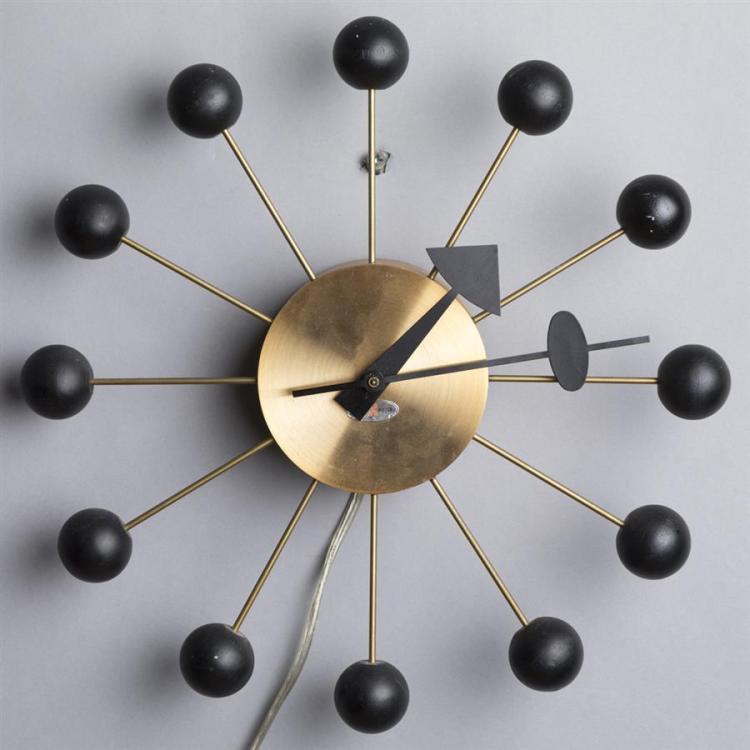
Released by Howard Miller in the 1950s, the Atomic Clock stands as a hallmark of mid-century modern design, boasting clean lines and atomic-inspired styling. These clocks, especially the wooden and metal variations, can fetch anywhere between $300 and $800, depending on their condition and the specific model. What sets this clock apart is its incorporation of the atomic design, a popular theme during the mid-20th century, reflecting the era’s fascination with science and space exploration. The clock’s simplicity and elegance make it a staple for those who appreciate mid-century furniture and décor.
The best feature of these clocks is the innovative design that combines form with aesthetics, making them not just timepieces, but art pieces. Original models with accurate atomic styling and undistorted glass faces are especially valuable. The unique movement and the attractive wood accents used in many of these pieces further increase their desirability. For collectors, the Howard Miller Atomic Clock represents an intersection of historical significance and design excellence. It’s an important addition to any mid-century collection.
Westclox Big Ben Alarm Clock (1950s)
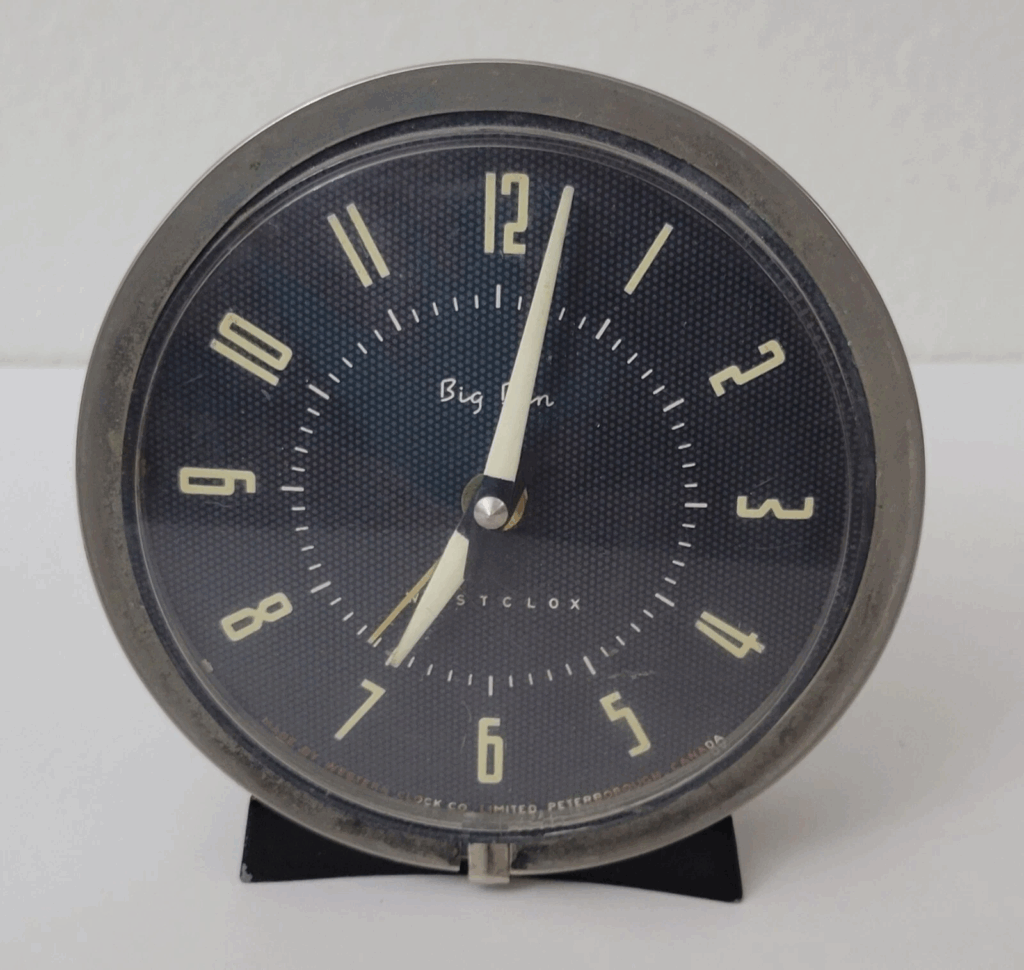
The Westclox Big Ben Alarm Clock was a staple in mid-century households, known for its large, easy-to-read dial and iconic ticking sound. Released in the early 1950s, these clocks can now sell for anywhere between $75 and $300 depending on the condition and model. The best feature of the Big Ben Alarm Clock is its straightforward, functional design combined with the reliability that made it so popular. Collectors are drawn to the nostalgia it evokes, especially those who remember these clocks in their youth. The clock is also highly collectible due to its association with vintage American home life.
The market for these clocks is influenced by the condition of the dial, the integrity of the bell alarm, and the age of the model. Over time, many of these clocks were heavily used, so finding one in pristine condition is rare. The appeal of the Big Ben Alarm Clock is in its simplicity, function, and connection to mid-century domestic life. For collectors who enjoy practical, vintage items with a strong cultural connection, the Big Ben clock is a must-have. Its enduring popularity and historical significance continue to make it a desirable piece for collectors.
Chelsea Ship’s Bell Clock (1960s)

The Chelsea Ship’s Bell Clock, made by the Chelsea Clock Company in the 1960s, is a prime example of high-quality American craftsmanship. Valued between $1,500 and $3,000, these clocks are prized for their maritime association and elegant design. The best feature is the ship’s bell chime, which rings at regular intervals, a feature commonly associated with nautical tradition. The clock’s brass case and classic face make it both a functional timepiece and a decorative object. Its link to the nautical world gives it a unique appeal among collectors.
What makes this clock particularly valuable is its association with luxury and history, as it was often used on yachts and ships. The clock’s condition, including the integrity of the brass casing and the bell mechanism, plays a key role in determining its value. For collectors interested in maritime antiques or high-quality clocks, the Chelsea Ship’s Bell Clock is a standout item. Its rarity and timeless appeal ensure that it remains a highly sought-after piece in the market. Its continued popularity proves that these clocks are more than just timekeepers; they are treasures of craftsmanship and history.
Junghans Wall Clock (1960s)
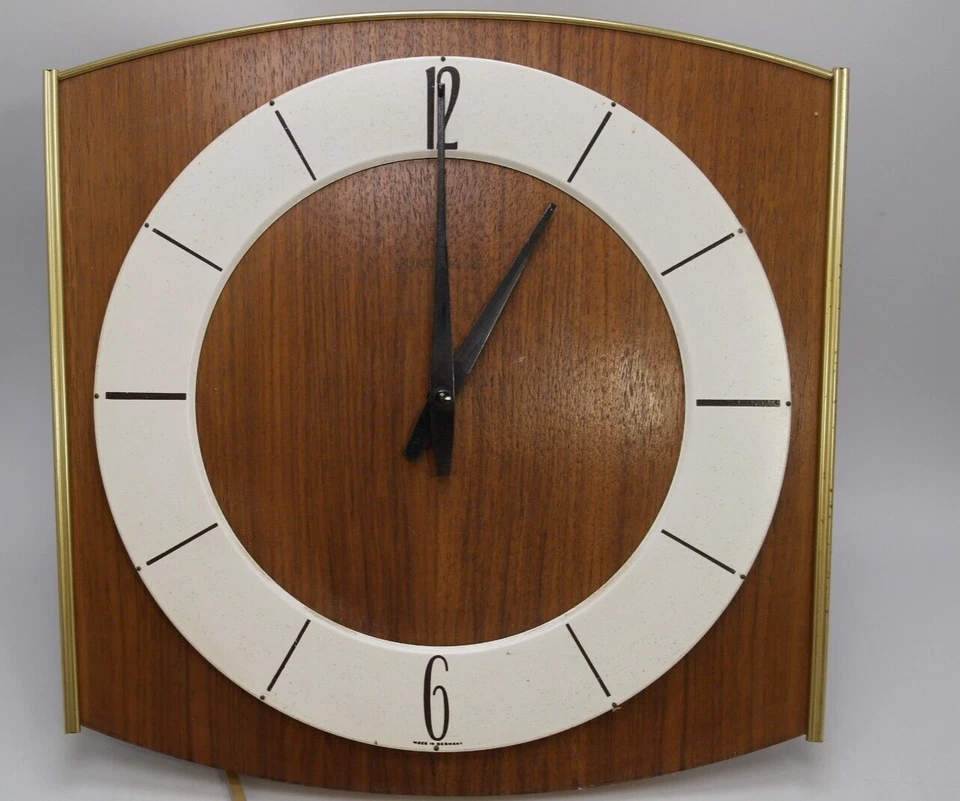
The Junghans Wall Clock, produced by the renowned German clockmaker Junghans in the 1960s, is celebrated for its precision and minimalist design. These clocks are typically valued between $200 and $600, depending on their condition and model. The clock’s best feature is its clean, geometric lines, with a focus on functionality and clarity. Known for its reliability, the Junghans Wall Clock remains a popular choice among collectors of vintage timepieces. The clock’s understated design makes it a perfect fit for modern and vintage interiors alike.
Junghans clocks are highly valued for their high-quality German engineering, and well-maintained models with original movements can fetch a premium price. These clocks were made to last, and those that survive in excellent condition are in high demand. The design’s simplicity and focus on timekeeping, without unnecessary embellishments, make this clock a timeless piece. Collectors of mid-century European design appreciate the Junghans Wall Clock for its balance of beauty and utility. It’s a perfect example of how functionality and style can merge seamlessly in a vintage timepiece.
Seth Thomas Banjo Clock (Late 1800s – Early 1900s)
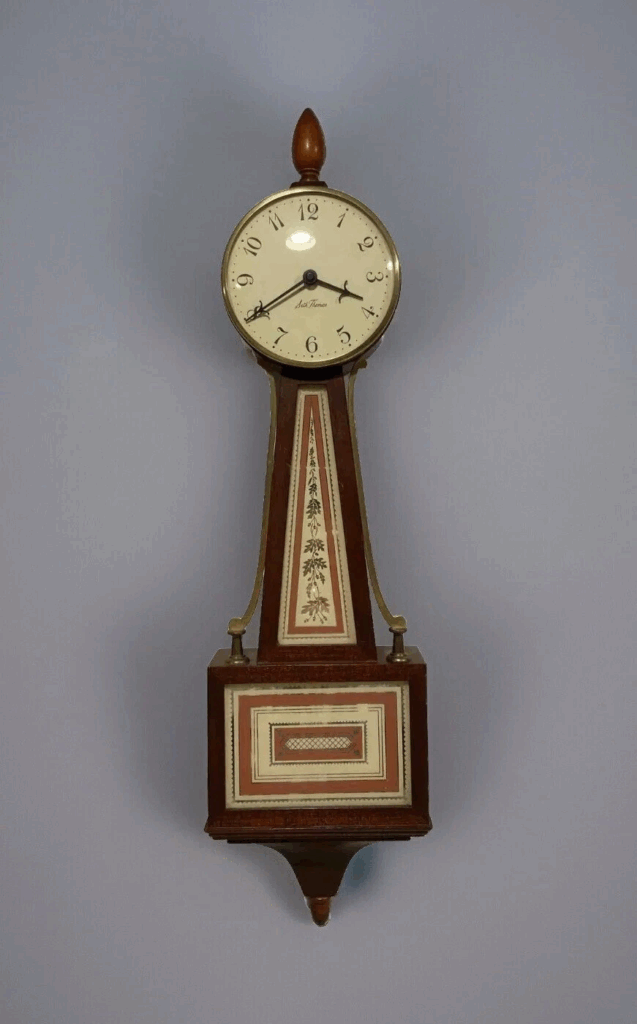
The Seth Thomas Banjo Clock, produced in the late 1800s and early 1900s, is a prime example of American craftsmanship. These clocks, which often feature a distinctive elongated case and a brass pendulum, are now highly prized by collectors, with prices ranging from $1,000 to $5,000. The clock’s best feature is its elegant design, combining traditional American style with precise timekeeping mechanisms. Its classic appearance, along with its history as a wall clock, makes it an essential piece for collectors. The Banjo Clock’s timeless appeal continues to captivate vintage clock enthusiasts.
What sets this clock apart from others is the combination of mechanical accuracy and classic design, making it not only a timepiece but also a decorative object. The condition of the case, movement, and brass pendulum significantly affects its value. Seth Thomas clocks, known for their quality, remain highly regarded among collectors. The Banjo Clock is often seen as a symbol of early American clockmaking, and well-preserved examples are particularly rare. Its historical significance and beautiful craftsmanship make it an invaluable addition to any collection.
Ugears Vintage Alarm Clock (1950s)
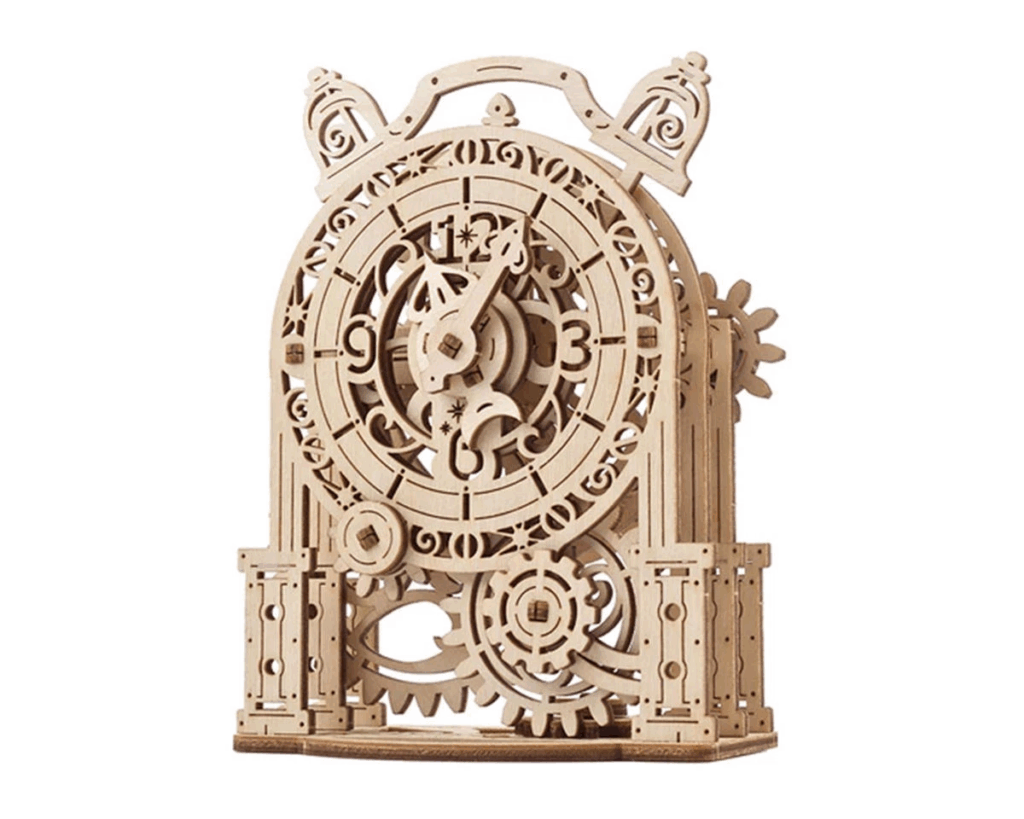
The Ugears Vintage Alarm Clock, though not strictly a mid-century wall clock, represents the era’s penchant for simple yet functional designs. Released in the 1950s, it’s now highly collectible, with prices ranging between $100 and $250 depending on condition and originality. The clock’s best feature is its straightforward, functional design that combines metal and wood with clean lines. Ugears clocks are valued for their mechanical precision and reliability, making them a popular choice among vintage timepiece collectors. Their minimalist design also appeals to modern collectors who appreciate vintage functionality.
Condition is key when evaluating the Ugears Vintage Alarm Clock, as the movement and wood accents can show signs of wear. While not as rare as some larger mid-century clocks, these vintage alarms offer collectors a more affordable entry into the world of timepiece collecting. The clock’s timeless design makes it an enduring piece of mid-century history. For those interested in collecting vintage clocks, the Ugears Vintage Alarm Clock offers a perfect balance of style and function. Its reliability and charm ensure that it remains a collectible for years to come.
Kienzle Mechanical Wall Clock (1950s)
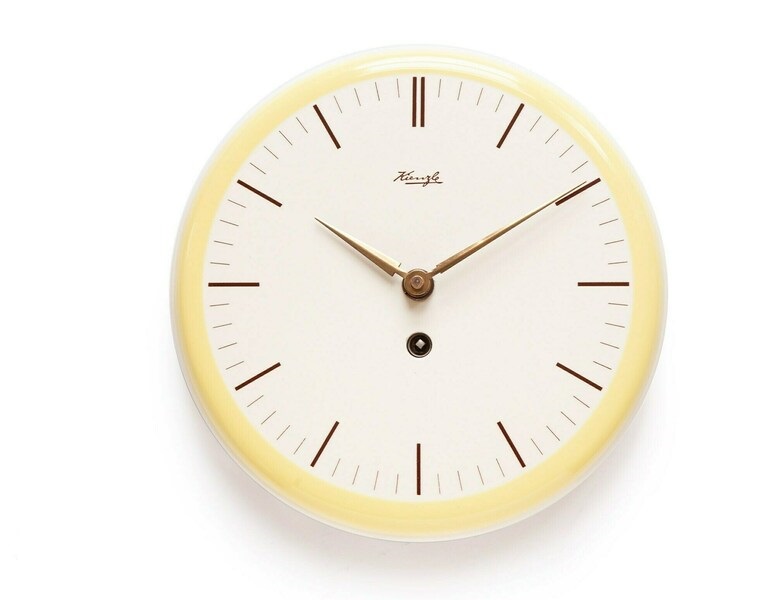
Produced by the German company Kienzle in the 1950s, this mechanical wall clock is sought after for its elegant design and superior craftsmanship. Collectors prize it for its smooth mechanical movement and minimalist dial. Well-maintained models can fetch between $500 and $1,000, depending on condition and age. The clock’s best feature is its simple, unembellished design, which emphasizes timekeeping functionality while maintaining a visually appealing aesthetic. The Kienzle brand has long been associated with high-quality timepieces, making it a respected name among collectors.
Collectors are particularly drawn to the brand’s reputation for precision and the clock’s classic style. The original dial and smooth movement are key aspects that affect its value, with rare versions in excellent condition fetching higher prices. This clock’s design makes it a perfect example of the quality and functionality of mid-century European timepieces. For those seeking a vintage piece that blends form and function, the Kienzle Mechanical Wall Clock is a standout choice. Its enduring design ensures that it remains a highly sought-after collectible.
Herman Miller Starburst Clock (1960s)
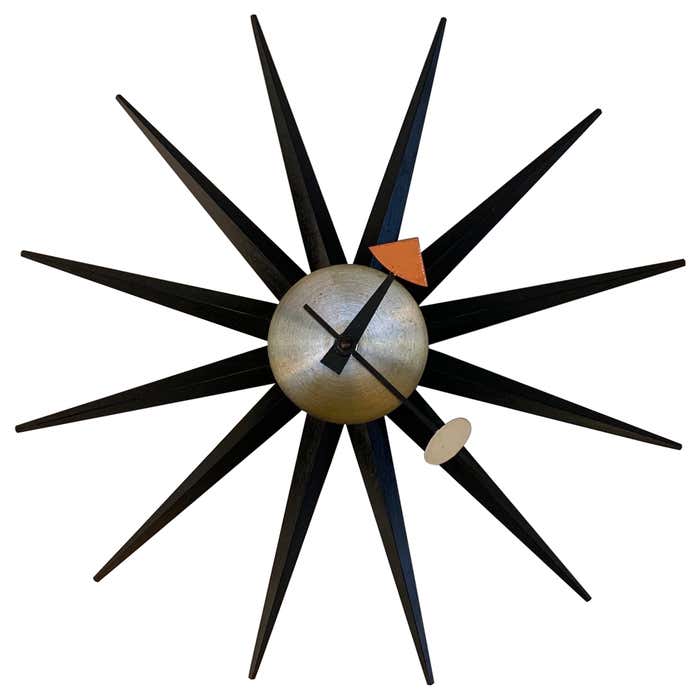
The Herman Miller Starburst Clock from the 1960s is another iconic mid-century timepiece that collectors seek out for its sharp, geometric design. Originally produced by the renowned Herman Miller brand, these clocks are now highly collectible, with prices often ranging between $700 and $1,500. The clock’s standout feature is the sunburst design with sharp, angled spokes radiating from the center, capturing the essence of the mid-century modern aesthetic. Its simple yet bold appearance makes it a favorite among interior designers and collectors alike.
What makes the Herman Miller Starburst Clock so desirable is its clean lines and quality construction. The clock’s minimalistic yet striking look makes it a perfect fit for modern homes and offices, maintaining its relevance even decades after its creation. The condition of the clock’s wood and the functionality of the movement are important factors in determining value. Well-preserved examples with the original dial and clean mechanics can fetch top dollar at auction. For mid-century collectors, this clock represents a blend of timeless design and precise engineering.
Herschede Tall Case Clock (1950s)
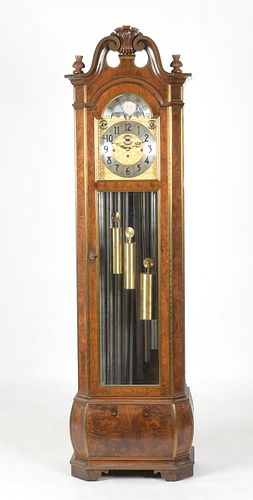
The Herschede Tall Case Clock, produced in the 1950s, is an excellent example of an American-made floor clock with a rich, traditional design. These clocks are highly regarded for their craftsmanship and intricate mechanical movement, making them highly collectible, with values often reaching between $2,500 and $10,000 depending on condition and rarity. The best feature is the finely crafted wooden case, often made from oak or walnut, paired with a highly accurate movement. The elegant design and timeless appeal of the Herschede Tall Case Clock make it an ideal piece for collectors who appreciate classic timepieces.
Collectors seek these clocks for their historical significance and exquisite detailing. Well-maintained examples with original finishes and mechanisms are highly valued, with rare models commanding top prices. The large size and mechanical precision of the Herschede Tall Case Clock make it a striking addition to any room. For those looking to invest in high-quality vintage timepieces, this clock is an excellent choice. Its combination of function, beauty, and history makes it one of the most prestigious pieces in mid-century clock collections.
This article originally appeared on Avocadu.
